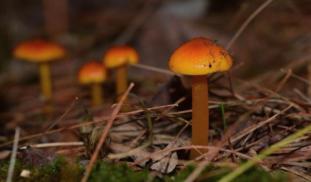Please wait...
About This Project
Mycoremediation is a method of bioremediation, in which fungi are introduced into an environment, in order to accelerate decomposition and improve the bioavailability of nutrients. Typically, species are selected based on targeted contaminants. A new approach to mycoremediation instead utilizes fungi that are already indigenous to the soil being remediated. This experiment seeks to prove / disprove whether the proliferation of native fungi can improve the fertility of soil.

Browse Other Projects on Experiment
Related Projects
Worms at Work: Scoping Natural Carbon Sequestration at Scale
For centuries, scientists noted earthworms' exploits as ecosystem engineers. Recent research shows the feasibility...
Whales as oceanographers: Developing multi-sensor tags for improved understanding and management of critical habitats
Limited oceanographic data prevent accurate prediction of whale foraging hotspots. To address this, we will...
Communities perception and monitoring of ocean acidification in the Douala-Edea national park (Cameroon)
This project will help us to evaluate the vulnerability of clam fishing to ocean acidification (OA) in the...



